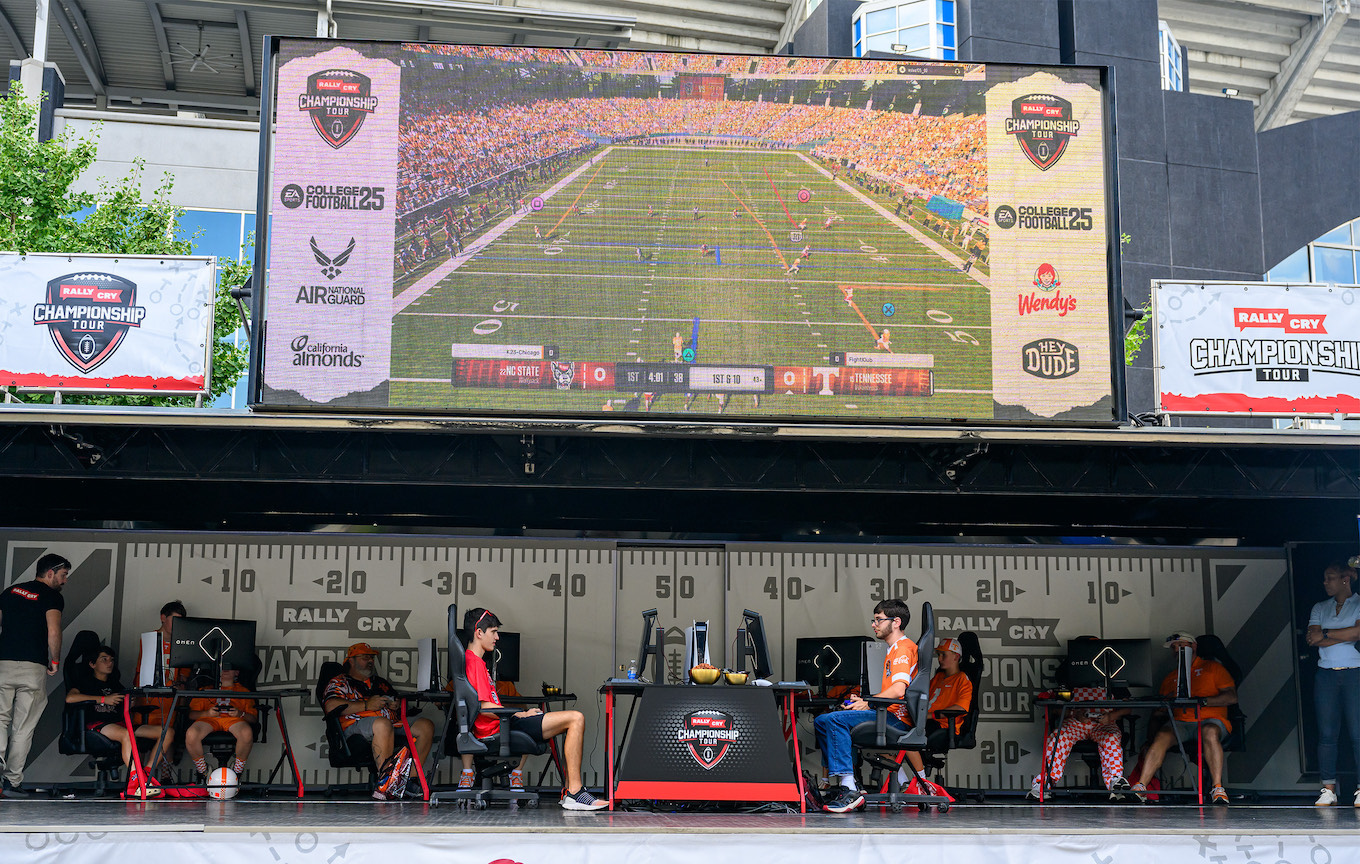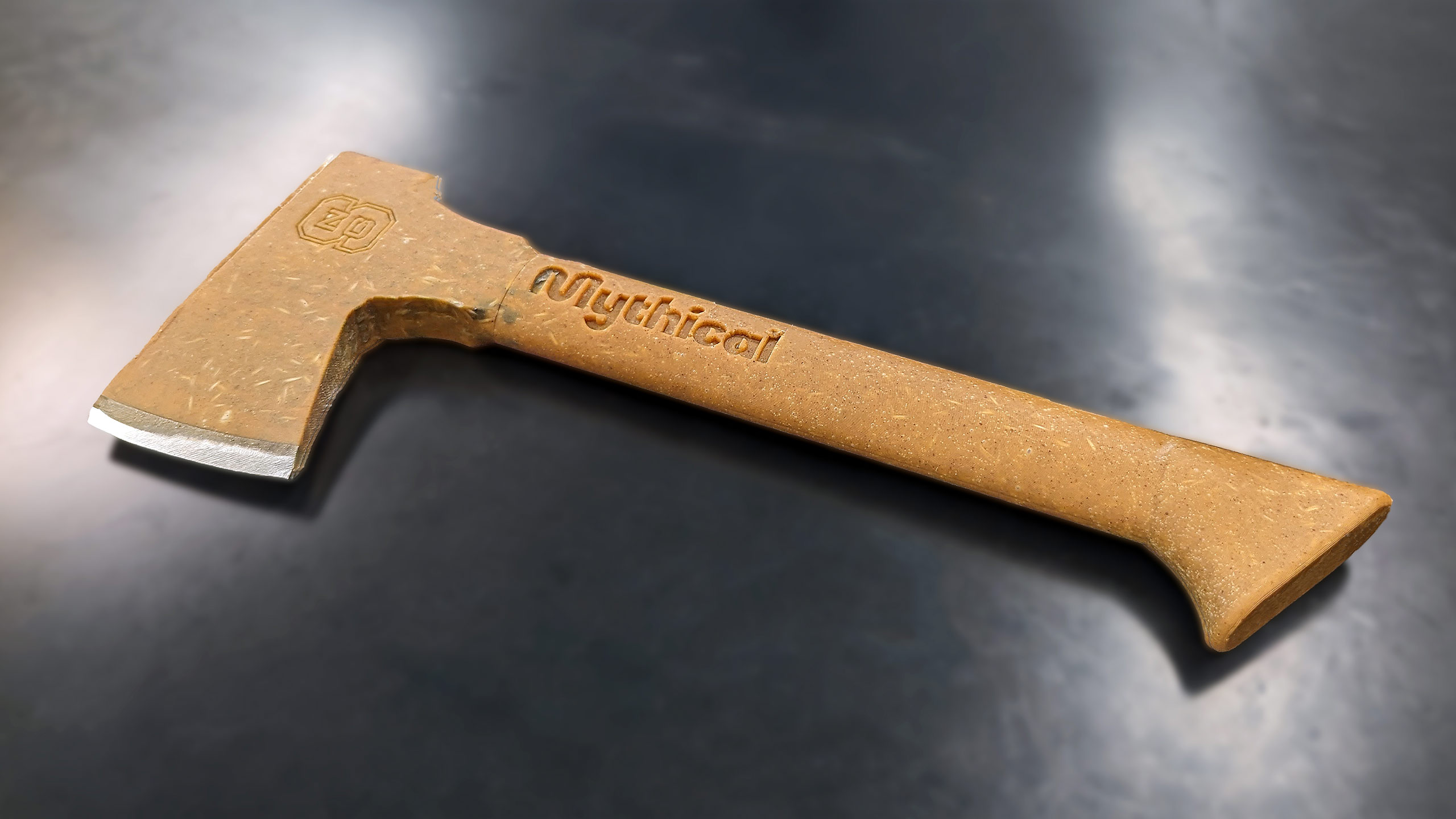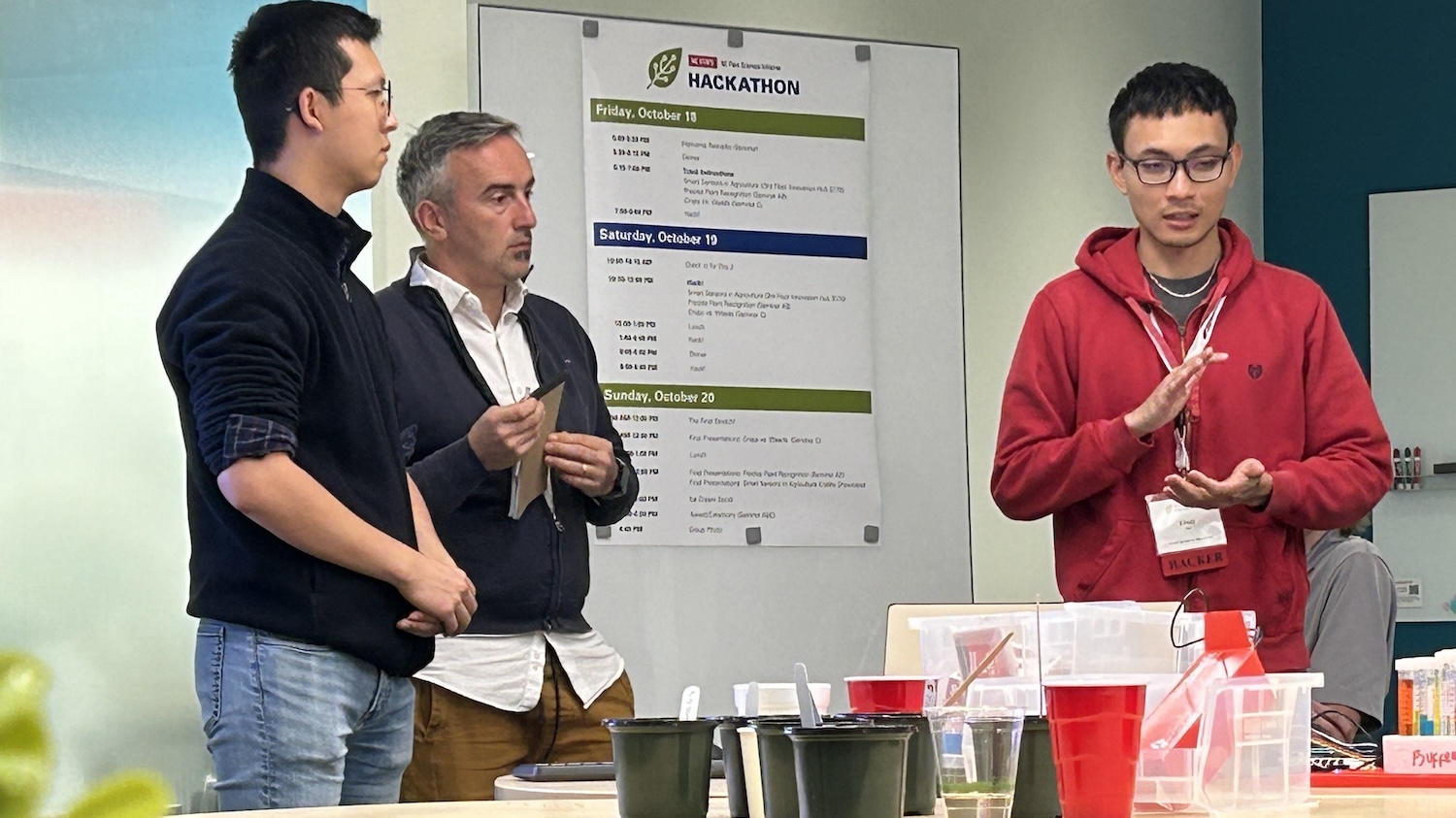Over 1,600 students. A total of 359 design teams.
Welcome to the 23rd annual First-Year Engineering Design Day.
Every year, the first-year students in the College of Engineering gather to present their final projects. The projects are completed as part of the E 101 – Introduction to Engineering and Problem Solving course and allow students to put core design concepts into practice during their first year while learning how to work successfully in a design team. This year, hundreds of students filled two rooms in the McKimmon Center over the course of two sessions.
David Parish, associate dean for academic affairs, and Hailey Queen, coordinator of Engineering First Year Programs, kicked off the event with a thank you to everyone who made the day possible and a few words of encouragement to the students.
“You’ve finished one year of engineering,” said Parish in his opening speech. “This is the culmination of that.”
Judges dispersed to the different tables, each with a rubric to determine the best projects of all.
“We’ll visit a group and then step aside and talk over the requirements and how we think they did,” said Bob Large, M.S. chemical engineering ’13 and a veteran judge of 15 years. “It’s fairly subjective.”
Some projects, like the concrete canoe, collapsible bridge, fabric bucket and precision launcher, are competitions in and of themselves, with large areas in different rooms for the students to test their designs. Others are individual projects within categories, like the various animatronics, each of which had their own tables.
Lindsay Sample, an electrical engineering student, was part of a team of four that created an animatronic dinosaur. Their team name, Women and Minority Animatronic Dinosaurs, or WMAD, is a play on Women and Minority Engineering Programs, where their group originally met.
“We wanted to design based on one of the 14 (National Academy of Engineering) grand challenges, so once we decided we wanted to do a dino, we realized the movements we had associated with a dino kind of mimicked the movements of a puppy, because dinos didn’t actually use to wag their tails,” said Sample.
“We had its neck moving and its tail moving to associate it with the theme of ‘joy of living,’ to create a device that would bring joy to both adults and children.”
Other students worked across colleges to make their project. One team designed harnesses for turtles for the College of Veterinary Medicine.
“We created a harness because they have to soak the turtles, but the injured parts can’t be in the water, so they use the makeshift parts to hold them,” said Nicole Cid-Hernandez, computer science major. “We made a sturdier, better version of that.”
“The harness we made is similar to what they already have, but theirs is made out of towels and it breaks really easily,” added Roopa Velraja, an environmental engineering major on what Cid affectionately referred to as The Turtle Tech Team. “It’s not really feasible and not very efficient. The one we made is more similar to a dog or a cat harness. You can take it off, put it back on, wash them.”
Earlier in the semester, students pick from a list of projects and rank their top three choices. Peyton Blosser, who is studying chemical engineering and paper science, was thrilled to get the automatic chicken coop project, his top choice.
“I’ve had chickens before, so I thought I might use this in the future at home,” said Blosser.
The other members of the team were initially less enthusiastic about building a chicken coop door, but they adapted quickly.
“We ended up having a lot of fun trying to figure this out.” said Dylan Matthews, a computer science major on the same design team.
The door works by giving a different signal when the user presses the “up” switch than when they press the “down” switch.
“Effectively, if you’re a farmer, you don’t have to bend all the way down to lift the door up,” said Matthews. “You can just hold ‘up’ and the chickens go in and at night, you can hold ‘down’ when they go to roost. It just makes it a lot easier for the farmers.”
Team WMAD ended up winning first place in the animatronics section. Not all teams went home with prizes, but more than a handful created something to be proud of.
“You are the best and brightest engineers pretty much in this country,” Parish said. “Between 1,800 of you, you’re going to do very well. There’s no doubt.”




























